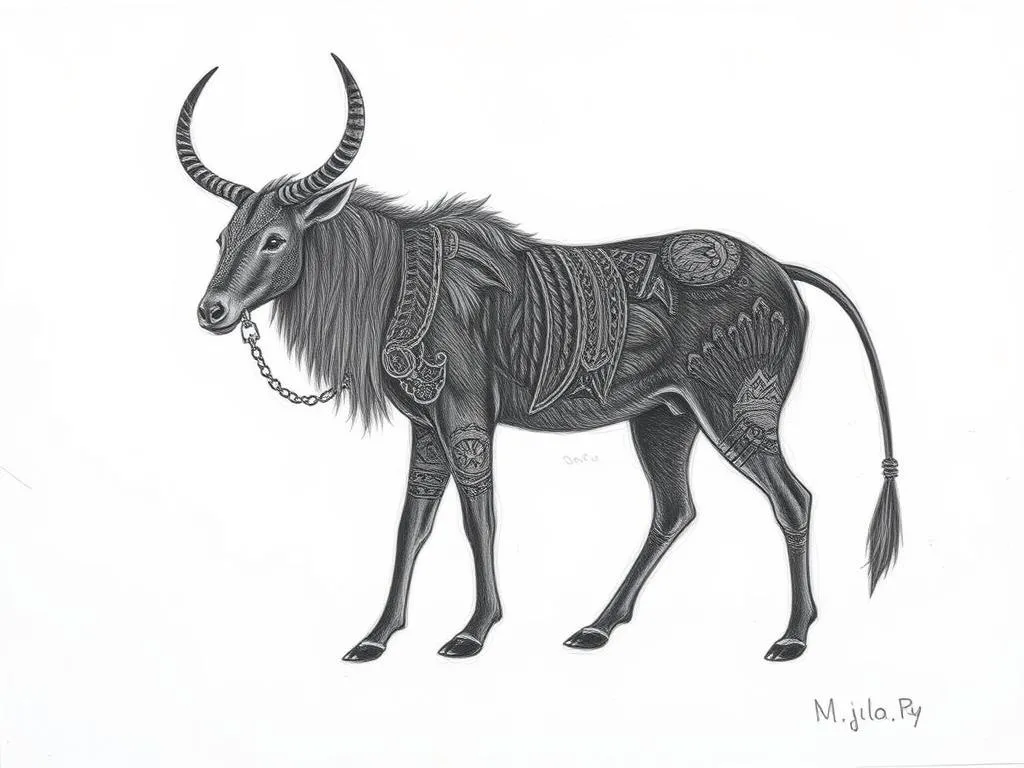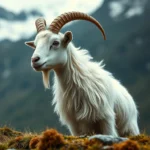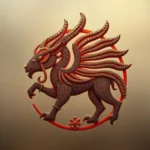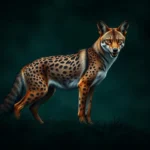The Majestic Somali Leopard: Symbolism and Spiritual Significance
Disclaimer: Some images on this website are AI-generated artworks and may not accurately represent real animals.
The Somali leopard is a captivating creature that roams the beautiful landscapes of Somalia. This magnificent animal not only contributes to the rich biodiversity of the region but also carries deep symbolism and meaning within Somali culture. From its physical characteristics to its spiritual significance, the Somali leopard embodies themes of strength, independence, and protection. In this blog post, we will explore the multifaceted nature of the Somali leopard and its profound influence on both individuals and society.
Understanding the Somali Leopard
Physical Characteristics
The Somali leopard is known for its stunning physical features that set it apart from other big cats. Below is a table summarizing its key characteristics:
| Feature | Description |
|---|---|
| Coat | Beautifully patterned with rosettes and spots |
| Color | A mix of golden and dark shades, often lighter below |
| Size | Males weigh between 40-90 pounds; females are smaller |
| Eyes | Striking yellow or green eyes, providing excellent night vision |
| Agility | Exceptional climbers, known for their stealth and speed |
The leopard’s coat not only serves as a means of camouflage in its natural habitat but also highlights its agility and predatory prowess. This majestic feline is built for stealth, capable of making swift movements to catch prey or evade threats.
Habitat and Behavior
The Somali leopard thrives in various habitats, including savannahs, forests, and mountainous regions. Its adaptability allows it to navigate the diverse landscapes of Somalia. These leopards are primarily solitary creatures, preferring to hunt and roam alone.
They exhibit remarkable hunting techniques, often stalking their prey before launching a surprise attack. Their diet consists mainly of ungulates, small mammals, and sometimes birds. Socially, Somali leopards are territorial, marking their domain to ward off rivals. This behavior speaks to their fierce independence and self-reliance.
Cultural Importance
Throughout history, the Somali leopard has held a significant place in Somali culture and folklore. In local traditions, the leopard is often regarded as a symbol of nobility and strength. Stories passed down through generations depict the leopard as a wise and powerful creature, embodying the traits that Somali people aspire to embody.
The leopard’s image is commonly found in traditional art and crafts, where it serves as a reminder of the natural beauty surrounding Somali communities. These cultural representations underscore the deep connection between the Somali people and their environment.

Symbolism & Spiritual Meaning
Strength and Power
The Somali leopard epitomizes physical strength and agility. In many cultures, including Somali, leopards are seen as embodiments of raw power. Their ability to ascend trees or leap great distances with grace makes them symbols of resilience and capability. This strength is not only physical but also metaphorical, representing the inner strength that individuals can draw upon in challenging times.
Independence and Solitude
The solitary nature of the Somali leopard reflects profound themes of independence and self-reliance. Just as the leopard thrives alone in the wild, individuals are encouraged to cultivate their own paths, make independent choices, and rely on their instincts. In Somali culture, this independence is celebrated as a virtue, and the leopard serves as a powerful reminder of the beauty in solitude.
Fierce Protection
The Somali leopard also embodies fierce protection, particularly concerning its territory. This characteristic translates into a broader symbolism of spiritual protection for individuals. In many belief systems, leopards are seen as guardians, offering strength and security to those who connect with their spirit. This protective aspect encourages individuals to stand firm in their beliefs and defend what is dear to them.
The Somali Leopard in Dreams
Interpretation of Dreams
Dreams featuring the Somali leopard can be rich with symbolism and meaning. Below is a table outlining common themes associated with dreaming about leopards:
| Dream Theme | Interpretation |
|---|---|
| Power | A reminder of your inner strength and capabilities |
| Independence | Encouragement to embrace your individuality |
| Protection | A sign that you are being guarded or supported |
| Caution | A warning to be aware of your surroundings |
| Assertiveness | A call to take charge in a situation |
When encountering a leopard in a dream, individuals may find themselves reflecting on their own life circumstances. The themes of power and independence can serve as motivation to pursue personal goals with confidence.
Messages and Warnings
Dreams of the Somali leopard may also carry messages or warnings. For instance, if a dreamer feels threatened by a leopard, it could signify the need to be cautious in their waking life. Conversely, a peaceful encounter may suggest a need to embrace one’s power and autonomy.
These dreams invite introspection, urging individuals to consider their feelings and experiences with leopards in their subconscious. The symbolism of the leopard can resonate deeply, prompting personal growth and self-discovery.
Personal Reflection
Dreams involving the Somali leopard encourage personal reflection. As one considers their emotions and experiences with this magnificent animal, they can gain insights into their own strengths and challenges. Engaging in this reflective process can lead to greater self-awareness and empowerment.
Modern Interpretations
Cultural Revival
In recent years, there has been a cultural revival surrounding the Somali leopard. Artists and writers are increasingly incorporating the symbolism and meaning of the leopard into contemporary works. The leopard’s image serves not only as a representation of cultural heritage but also as a source of inspiration for creativity and expression.
This resurgence highlights the importance of reconnecting with traditional symbols and understanding their relevance in today’s society. The Somali leopard stands as a testament to the enduring legacy of cultural motifs.
Environmental Significance
The role of the Somali leopard extends beyond cultural symbolism; it is also pivotal in discussions about wildlife conservation in Somalia. As a keystone species, leopards play a crucial role in maintaining ecological balance. The decline of their population can have far-reaching effects on the environment.
Conservation efforts are essential to preserving the habitats of these majestic animals. By recognizing the symbolism and meaning of the Somali leopard, communities are inspired to take action in safeguarding their natural heritage.
Social Symbolism
In modern contexts, the characteristics of the Somali leopard are often used to symbolize strength in personal and social struggles. Individuals may draw upon the leopard’s attributes as they navigate challenges in their lives. The leopard’s fierce independence and protective nature resonate with those seeking empowerment in their journeys.
As society grapples with various issues, the Somali leopard serves as a beacon of strength and resilience, inspiring people to confront adversity with courage and determination.
Key Takeaways
- The Somali leopard is a rich symbol deeply embedded in Somali culture, representing strength, independence, and protection.
- Its physical characteristics and behaviors illustrate traits that can inspire personal empowerment and growth.
- Cultural revival and conservation efforts emphasize the importance of preserving the natural habitats of such iconic animals.
Conclusion
The Somali leopard is more than just an animal; it is a powerful symbol woven into the fabric of Somali culture. Its symbolism and meaning resonate across generations, reflecting themes of strength, independence, and protection. As we explore the significance of the Somali leopard, we are reminded of our connection to nature and the importance of preserving the habitats that sustain these majestic creatures.
Through understanding the Somali leopard’s role in both historical and modern contexts, we can appreciate its impact on personal growth and cultural identity. Embracing the lessons derived from the leopard’s traits can inspire individuals to navigate their own paths with courage and resilience. In recognizing the Somali leopard’s significance, we also acknowledge the urgent need to protect wildlife and the environments that nurture them.







